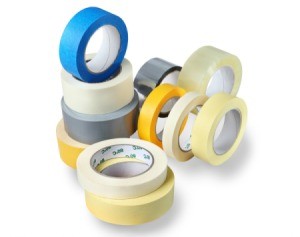 I am having a problem removing tape residue from a flat white painted wall (drywall). I have tried warm water and soap, but am afraid to damage the paint by trying a marketed product.
I am having a problem removing tape residue from a flat white painted wall (drywall). I have tried warm water and soap, but am afraid to damage the paint by trying a marketed product.
Try Goo Gone in an inconspicuous area. I think you'll be pleased with the results.
Have you tried picking up the adhesive using more of the same tape?
I also found this article "25 Helpful Items To Remove Sticky Adhesive Goo" here: tipnut.com/
A few of the tips look promising. I think I would try
10. Baking Soda & Water Paste
16. Art gum Erasers (Not a pink pencil eraser! Look in an art supply store or perhaps even a scrap booking store)
24. basically, heat with a hairdryer to soften and wipe off with a damp cloth. Good luck!
Try using Mr. Clean Magic Erasers, slightly dampened. They work well on most surfaces! Good luck.
Have you tried using a steamer on it? Or maybe even a hair dryer.
Now don't go using Goo-gone, Goof-off, Baby oli or WD 40. You will end up haveing to wonder how to get the oil stain off next.
I was searching around for something to use.Tried sugar soap which did not work. A can of flyspray was handy and bingo the tape residue came off with no damage to paint.
Mortein fast knockdown active constituent 2.41g /kg Bioallethrin. Tape residue was about a month old.
I have used mineral spirits. May be pricey, don't remember, but did the job with no elbow grease and when nothing else that I tried worked. I now renamed this product, "miracle spirits".
Here are the questions asked by community members. Read on to see the answers provided by the ThriftyFun community.
How do you get tape goo off walls?
Molly
Keep in mind what kind of wall surface or finish you are working with, and consider trying one of these:
- Baking Soda (mix with warm water in palm of one hand, dab finger into this paste and try rubbing on "goo" spot - very mild, almost no abrasion, rinses easily, but use with care on any surface that could be damaged by water or rubbing.)
- Mayonnaise (put dab of mayo on spot and let stand 30 minutes or so, repeat as necessary - can leave oily spot on susceptible surfaces or finishes.)
- Lighter fluid (last resort -- Hazardous -- extremely flammable, bad fumes, can dissolve or damage or stain most surfaces. Not a horrible idea on something like a plain white refrigerator door, but very risky on most paints and, I should think, many wall papers. Use a tiny bit on a paper towel or Q-Tip. Will liquefy and spread "goo" as much as pick it up, but might break "goo" up enough so Baking Soda tip (above) works. -- Work quickly. Fluid dries in seconds and "goo spot" becomes "goo smear." When done (or given up), wash "cleaned" area with Baking Soda or dish-washing liquid. Residual fluid continues to dissolve susceptible finishes, and is still flammable until it evaporates completely. Ditto for used paper towel or Q-Tip. Wash them out in soapy water and dispose of carefully. Repeating: Using lighter fluid is risky because of the fire hazard and the possibility of damaging or staining the wall. If you're not comfortable trying it, then don't.)
OOPS or GooGone, if the wall isn't papered.
Try rubbing it off with something dipped in alcohol. It's much safer than lighter fluid, but slightly less likely to work.